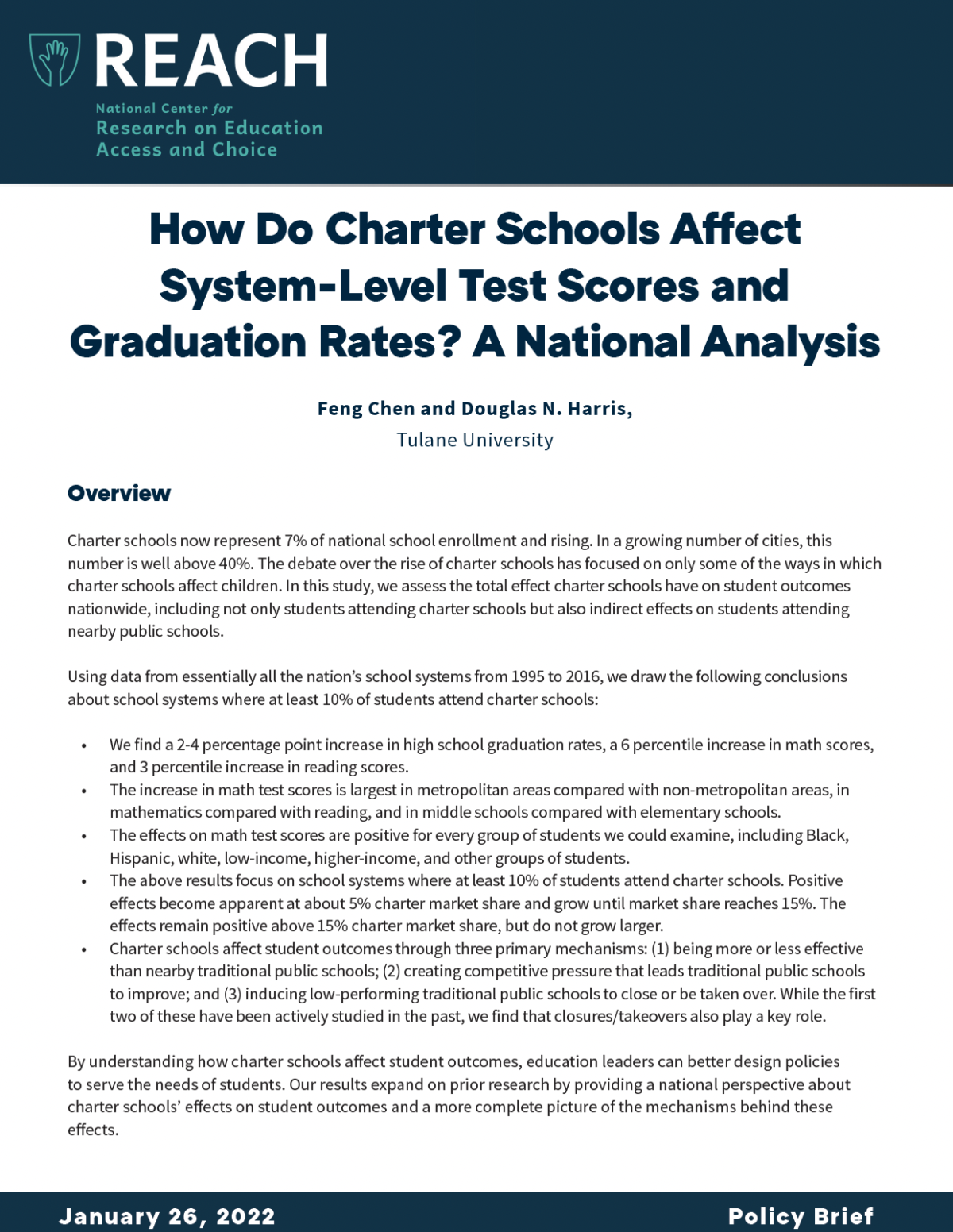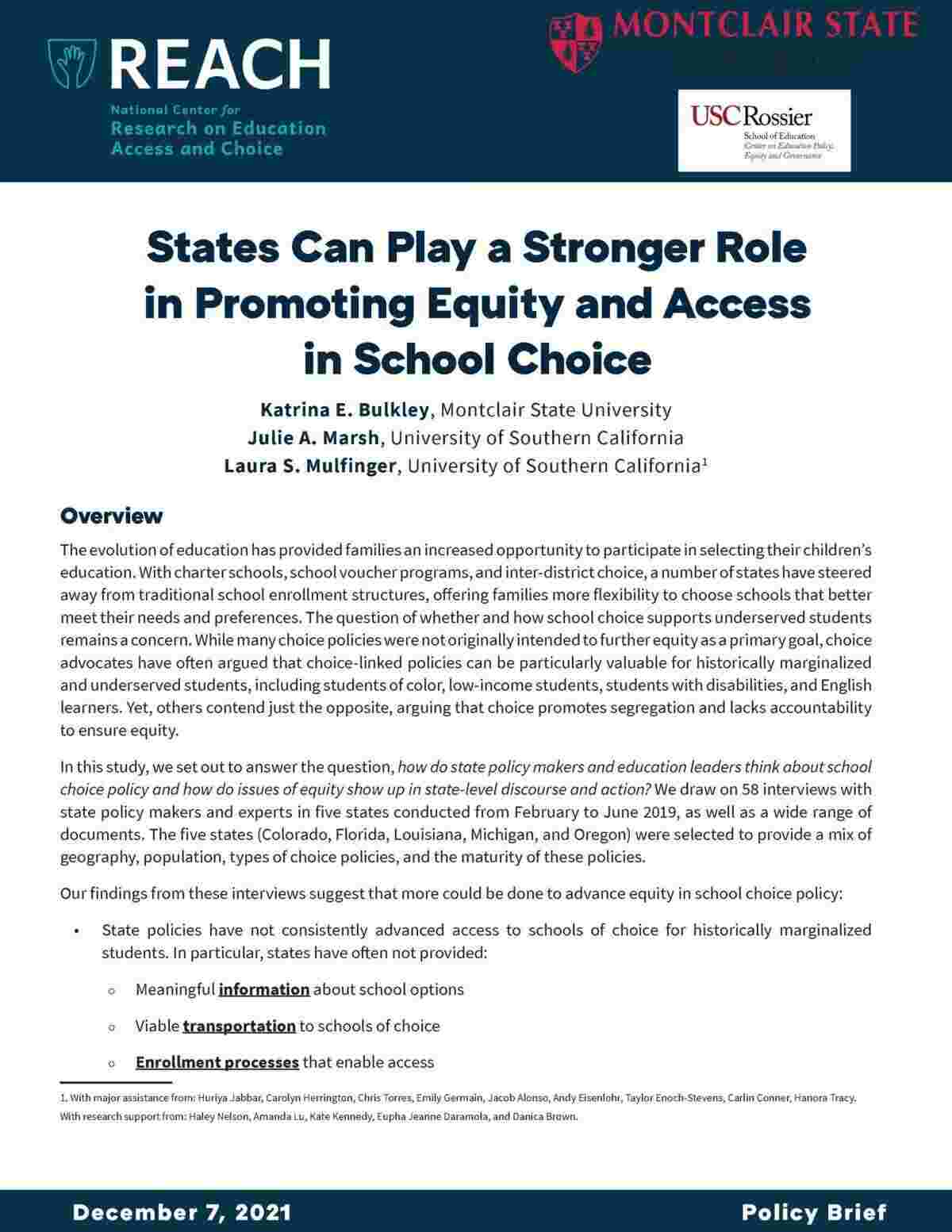Charter schools now represent 7% of national school enrollment and rising. In a growing number of cities, this number is well above 40%. The debate over the rise of charter schools has focused on only some of the ways in which charter schools affect children. In this study, we assess the total effect charter schools have on student outcomes nationwide, including not only students attending charter schools but also indirect effects on students attending nearby public schools.
Using data from essentially all the nation’s school systems from 1995 to 2016, we draw the following conclusions about school systems where at least 10% of students attend charter schools:
- We find a 2-4 percentage point increase in high school graduation rates, a 6 percentile increase in math scores, and 3 percentile increase in reading scores.
- The increase in math test scores is largest in metropolitan areas compared with non-metropolitan areas, in mathematics compared with reading, and in middle schools compared with elementary schools.
- The effects on math test scores are positive for every group of students we could examine, including Black, Hispanic, white, low-income, higher-income, and other groups of students.
- The above results focus on school systems where at least 10% of students attend charter schools. Positive effects become apparent at about 5% charter market share and grow until market share reaches 15%. The effects remain positive above 15% charter market share, but do not grow larger.
- Charter schools affect student outcomes through three primary mechanisms: (1) being more or less effective than nearby traditional public schools; (2) creating competitive pressure that leads traditional public schools to improve; and (3) inducing low-performing traditional public schools to close or be taken over. While the first two of these have been actively studied in the past, we find that closures/takeovers also play a key role.
By understanding how charter schools affect student outcomes, education leaders can better design policies to serve the needs of students. Our results expand on prior research by providing a national perspective about charter schools’ effects on student outcomes and a more complete picture of the mechanisms behind these effects.



